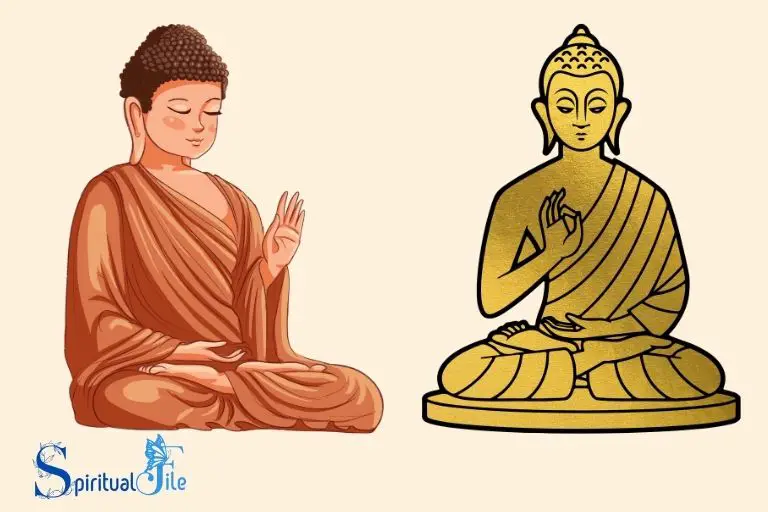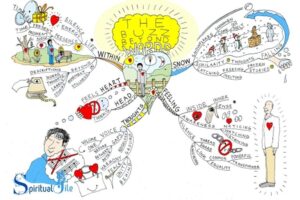Religious Or Spiritual Affiliation Examples: Beliefs!
Religious or spiritual affiliations refer to an individual’s connection with specific religious or spiritual groups, beliefs, or practices.
Some examples include affiliations with Christianity, Buddhism, Hinduism, Islam, Judaism, Atheism, Agnosticism, and various New Age practices.

Key Takeaway
11 Religious or Spiritual Affiliations Examples
| Religious/Spiritual Affiliation | Description |
|---|---|
| Christianity | A monotheistic religion centered on the life and teachings of Jesus Christ as presented in the New Testament. |
| Islam | A monotheistic and Abrahamic religion articulated by the Qur’an, a religious text considered by its adherents to be the verbatim word of God (Allah). |
| Hinduism | A religion or a way of life found in the Indian subcontinent most notably in India and Nepal. |
| Buddhism | A philosophy, religion, and spiritual tradition believed to have originated in ancient India, attributed commonly to Siddhartha Gautama, who is known as “the Buddha”. |
| Sikhism | A monotheistic religion founded in Punjab during the 15th century by Guru Nanak. |
| Judaism | A monotheistic religion that emerged among the ancient Hebrews. |
| Baha’i | A monotheistic religion which emphasizes the spiritual unity of all humankind, founded by Bahá’u’lláh in 19th-century Persia. |
| Jainism | An ancient Indian religion prescribing a path of non-violence towards all living beings. |
| Shinto | The indigenous faith of the Japanese people and as old as Japan itself. |
| Agnosticism | A belief system that neither denies nor accepts the existence of a higher power. |
| Atheism | The belief that there is no deity. |
Cultural And Historical Influences On Religions
Cultural and historical influences play a significant role in shaping religious or spiritual affiliations. Different cultures throughout history have influenced the development of various religions, resulting in a diverse range of examples observed worldwide.
Religious Affiliation In Different Regions And Cultures:
Religions vary across different regions and cultures, reflecting the diverse beliefs and practices of societies around the world.
Here are some examples of religious affiliations in different regions and cultures:
Christianity:
- Europe: Christianity has a strong presence in countries like italy, spain, and france, where catholicism is the dominant denomination.
- North america: Protestantism is the major branch of christianity in the united states and canada, with various denominations such as baptist, methodist, and presbyterian.
- Africa: Christianity has spread across the continent, with a significant number of christians in countries like nigeria, south africa, and kenya.
Islam:
- Middle east: Islam originated in the middle east, and countries such as saudi arabia, iran, and egypt have a majority muslim population.
- Southeast asia: Indonesia and malaysia have the highest muslim populations in this region.
Hinduism:
- India: Hinduism is the most widely practiced religion in india, where it originated. It is deeply embedded in indian culture and traditions.
Buddhism:
- East asia: Buddhism is prevalent in countries like china, japan, and south korea, where it has influenced art, philosophy, and daily life for centuries.
Judaism:
- Israel: Judaism is the main religion in israel, with jerusalem being a significant religious center for jewish people.
Sikhism:
- Punjab: Sikhism originated in the region of punjab in india and is mainly practiced by the sikh community.
Exploring Indigenous Spiritual Belief Systems:
Indigenous spiritual belief systems are deeply rooted in the cultural heritage of native peoples around the world.
Here are some examples:
Native american spirituality:
- Native american tribes have diverse spiritual beliefs, often centered around a connection to nature and the importance of balance and harmony.
Aboriginal dreamtime:
- Indigenous australians have their spiritual beliefs known as the dreamtime, which encompasses creation stories and the relationship between people, land, and spirituality.
African traditional religions:
- Various african ethnic groups have their traditional religions, which include ancestor worship, animism, and rituals to honor nature and spirits.
Evolution Of Religious Practices Over Time:
Religion has undergone significant changes and adaptations throughout history.
Here are a few examples of the evolution of religious practices over time:
Polytheism to monotheism:
- Many ancient religions, such as ancient egyptian and greek religions, initially worshipped multiple gods. Over time, monotheistic religions like judaism, christianity, and islam emerged, emphasizing belief in a single deity.
Reformation and religious splintering:
- The protestant reformation in the 16th century led to the formation of various protestant denominations, diverging from the catholic church. This resulted in a more diverse religious landscape in europe and beyond.
Modernization and secularization:
- With the advancement of science and technology, religious beliefs and practices have faced challenges in the modern era. Secularization has led to a decline in religious affiliation in some societies.
Remember, religious affiliation is influenced by cultural and historical factors. Exploring different regions and cultures provides insight into the rich tapestry of human spirituality and the evolution of religious practices over time.
The Role of Religious and Spiritual Affiliation in Society
Religious and spiritual affiliations significantly shape contemporary societies, impacting norms, ethics, politics, and social cohesion.
1. Norms and Values: These affiliations often establish societal norms and values, guiding behavior and fostering a sense of responsibility.
2. Ethics and Morality: They provide a moral compass that influences personal and collective choices, particularly in issues like abortion and euthanasia.
3. Politics: Religious groups can intersect with political ideologies, either advocating for policies or participating in governance, with varying impacts on stability or conflict.
4. Social Cohesion: They promote social cohesion by creating communities and offering support networks. Shared rituals and festivals bring diverse people together.
5. Conflicts: Religious differences have historically fueled tensions, extremism, and even wars, leading to conflicts and discrimination.
6. Cultural Identity: Religious affiliations shape cultural identities, influencing art, literature, music, and rituals, contributing to human culture.
7. Education and Healthcare: They can impact education and healthcare policies in societies where religion and state intertwine, raising questions about the balance between beliefs and secular knowledge.
The Intersection of Religious and Spiritual Beliefs
In today’s diverse and interconnected world, many individuals find themselves navigating the complex terrain where organized religion intersects with personal spiritual beliefs.
This intersection often gives rise to a phenomenon known as syncretism, where individuals seamlessly blend elements of different religious traditions and spiritual practices into their belief systems.
Syncretism is a testament to the evolving nature of spirituality and the human quest for meaning.
Syncretism takes various forms, ranging from the incorporation of rituals and symbols from different faiths into one’s religious practice to the adoption of eclectic belief systems that draw inspiration from multiple spiritual traditions.
This blending can be a deliberate and conscious choice, driven by a desire to explore and reconcile the diverse spiritual influences encountered in today’s globalized world.
One manifestation of syncretism is the emergence of new religious movements that combine elements from various established religions, creating unique hybrid belief systems.
Individuals who identify as both religious and spiritual often seek to strike a balance between the structure and community provided by organized religion and the personal, introspective nature of spiritual exploration.
They may attend church, mosque, synagogue, or temple services while also engaging in meditation, energy healing, or yoga. This duality allows them to tap into the rich tapestry of human spirituality and find meaning in diverse ways.
Syncretism challenges traditional boundaries and definitions of religion. It underscores the idea that spirituality is deeply personal and adaptable, reflecting the unique life journeys and experiences of individuals.
As syncretism becomes more prevalent, religious institutions are adapting to accommodate the diverse spiritual needs of their members, fostering an environment of inclusivity and pluralism.
Conclusion
In our diverse and interconnected world, religious and spiritual affiliations profoundly influence individuals’ beliefs, values, and sense of community. From Christianity to Buddhism, Islam to Hinduism, the range of affiliations offers diverse ethical frameworks and spiritual practices.
Beyond organized religions, personal spirituality has gained popularity, allowing individuals to forge unique paths. Whether through prayer and rituals or meditation and mindfulness, the choice is deeply personal, offering comfort, guidance, and identity.
These affiliations provide belonging and purpose, seeking truth, understanding, and connection with the divine or the universe. As we journey individually, let’s embrace this richness and diversity, finding wisdom and inspiration in shared human experiences.






